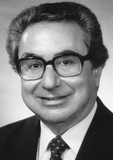-
? - (d.)1997 December 03
Bio/Description
A pioneer in the field of information systems engineering, he continued to expand his interests and contributions as the field developed and grew. He was one of a small number of engineers working on the new digital computers in the early 1950s. In 1951, while still a student at MIT, he joined the pioneering MIT Digital Computer Laboratory, beginning a career that spanned the revolutionary developments in digital computing hardware and software. As a member of the MIT group that built the Whirlwind computer (now in the Smithsonian Institution), he designed the hardware and software system that permitted the machine to accept real-time inputs, a truly groundbreaking effort at that time. When the MIT Lincoln Laboratory was formed, he served as a group leader in the Digital Computer Division until 1958. Without the operating systems common today, he and his co-workers at MIT Lincoln Laboratory designed and tested the weapons direction and intercept guidance system for the prototype air defense system called the Cape Cod System. He led the group responsible for design of the planned operational air defense system (SAGE) and the formulation of the operational and mathematical specifications for the SAGE system. This experience contributed to the development of tools for software development and provided an important forerunner for the large software industry today. He was the CEO for MITRE Corporation from 1986 to 1990. He is a co-author of two books: 1987 - Managing Nuclear Operations with Ashton B. Carter and John D. Steinbruner; and 1991 - Soviet Nuclear Fission: Control of the Nuclear Arsenal in a Disintegrating Soviet Union, with Ashton B. Carter, Kurt M. Campbell, and Steven E. Miller.
-
Date of Death:
1997 December 03 -
Noted For:
Designer of the hardware and software system for the Whirlwind computer that permitted the machine to accept real-time inputs -
Category of Achievement:
-
More Info:


